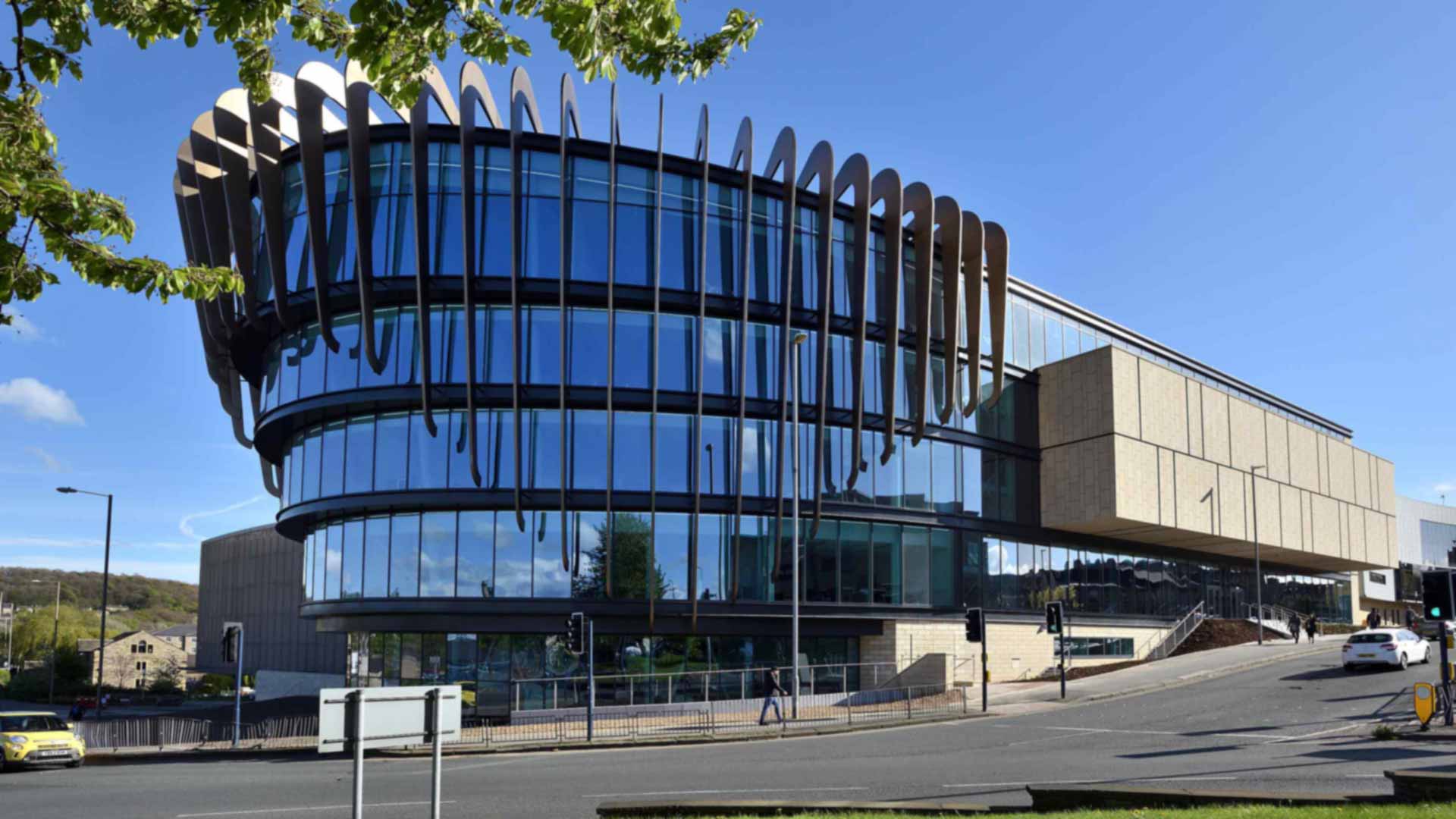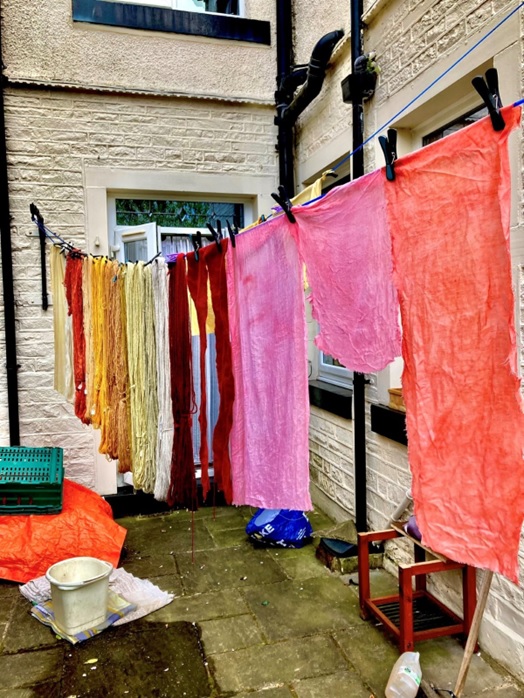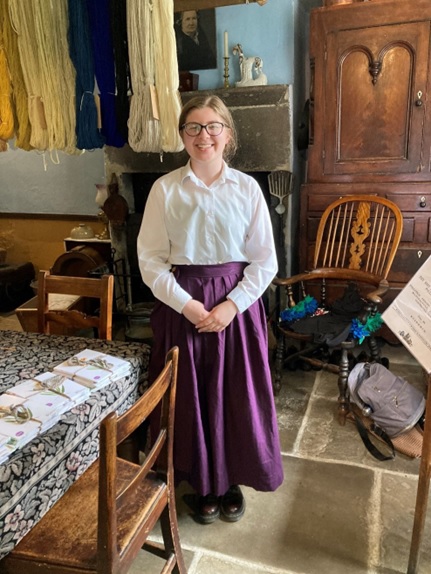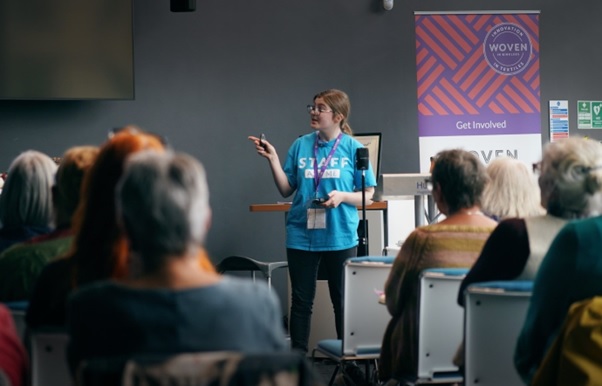
Exploring Local Textile Heritage
Exploring local textile heritage: the history of natural and synthetic dye in Huddersfield
I started this work to explore dyeing heritage in Huddersfield throughout the eighteenth and nineteenth centuries, as a part of the WOVEN 2023 ‘Growing Colour Together’ festival. There is minimal exploration of Huddersfield’s dyestuffs heritage or usage in textile manufacturing, which is strange considering ICI and Holliday’s companies had a strong presence in the town. The original plan was to utilise primary sources and do a deep dive of Huddersfield mill documents, however, this was not to be due to the Kirklees archive being shut. Therefore, to circumnavigate this issue, I decided to create an exhibition to gather primary data from exhibition attendees and understand the perceived difference between ‘natural’ and synthetic dyestuffs. In particular, which of these dyestuffs are perceived to be environmentally friendly and why?
The project entailed the creation of an oral history of people’s experiences of textile dyeing, ranging from textile workers to a consumer getting blue hands from the dye off their jeans, as well as the exhibition at the Colne Valley Museum. The exhibition included loans from the Tolson Museum as well as a display of synthetically and naturally dyed yarns. Each attendee was asked to guess which ones were natural and which ones synthetic dyestuffs and which type they preferred. These questions encouraged attendees to confront their own biases, as well as prompt exploration of how natural dyestuffs did in fact have a significant impact on nineteenth-century Huddersfield’s environment, particularly through the pollution of local waterways. This project meant I could create a thesis that included personal experience, primary data, archival examinations, and existing literature.
The results of this project have been astounding, in both personal growth and in public interest. This experience has given me numerous contacts both in the creative industries and academically; I even ended up speaking at the WOVEN 2023 conference! This project required me to improve my communication skills, talking to people from all walks of life and experiences to understand what they knew about dyestuffs. I have gained experience curating an actual exhibition with exhibits I helped create, which is a fantastic confidence booster. I am currently looking into employment opportunities in the heritage sector, and these experiences have made my applications more attractive. Additionally, I was able to write up my exhibition experiences in the PGR journal for the University of Huddersfield, expanding my repertoire.

Throughout this project, the most interesting thing has been how much the public enjoys learning about and experiencing dyestuffs. The majority of people I talked to about this subject were incredibly supportive and interested, especially in the environmental aspects of industrial textile manufacture. It was a pleasure to provide a link between the public and various Kirklees organisations that want to help people’s lives through these crafts.
Many of the environmental issues in textile manufacture we face today are similar to ones in the nineteenth century, especially environmental pollution. By studying this subject, we can understand the effectiveness of environmental policies, as well as how the public can change their spending habits and tastes to reduce environmental impact.

I am interested in continuing my research into nineteenth-century textile manufacture; my current interest is in exploring support for the American confederacy in West Yorkshire during the American Civil War, as well as trying to recreate the authentic styles and colours of nineteenth-century textiles. Additionally, I would like to explore the environmental impact of dye manufacture in Huddersfield further, expanding beyond the rivers to understand to what extent there was intensive natural dyestuff production in the Huddersfield region and the effects of this on local ecology.
